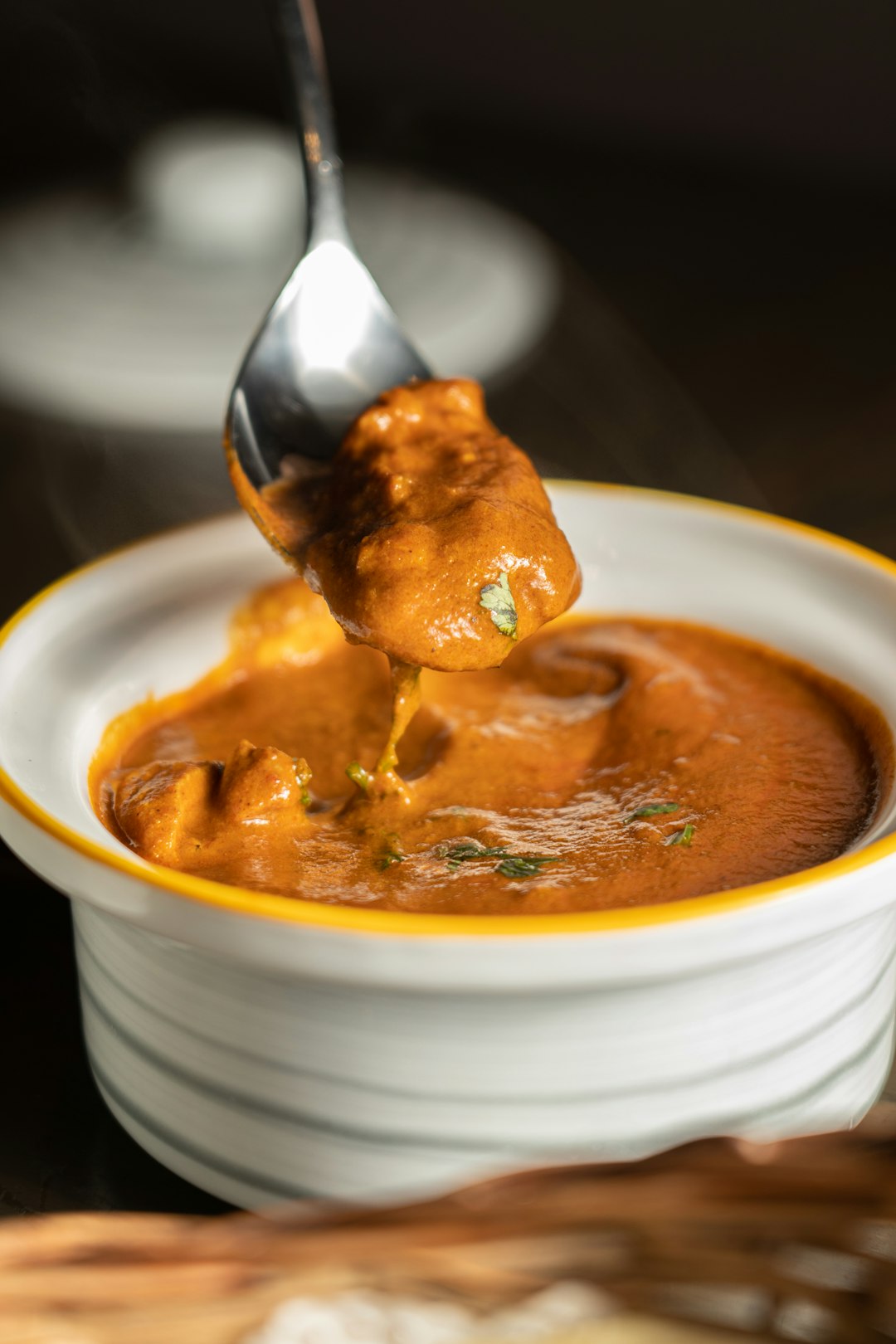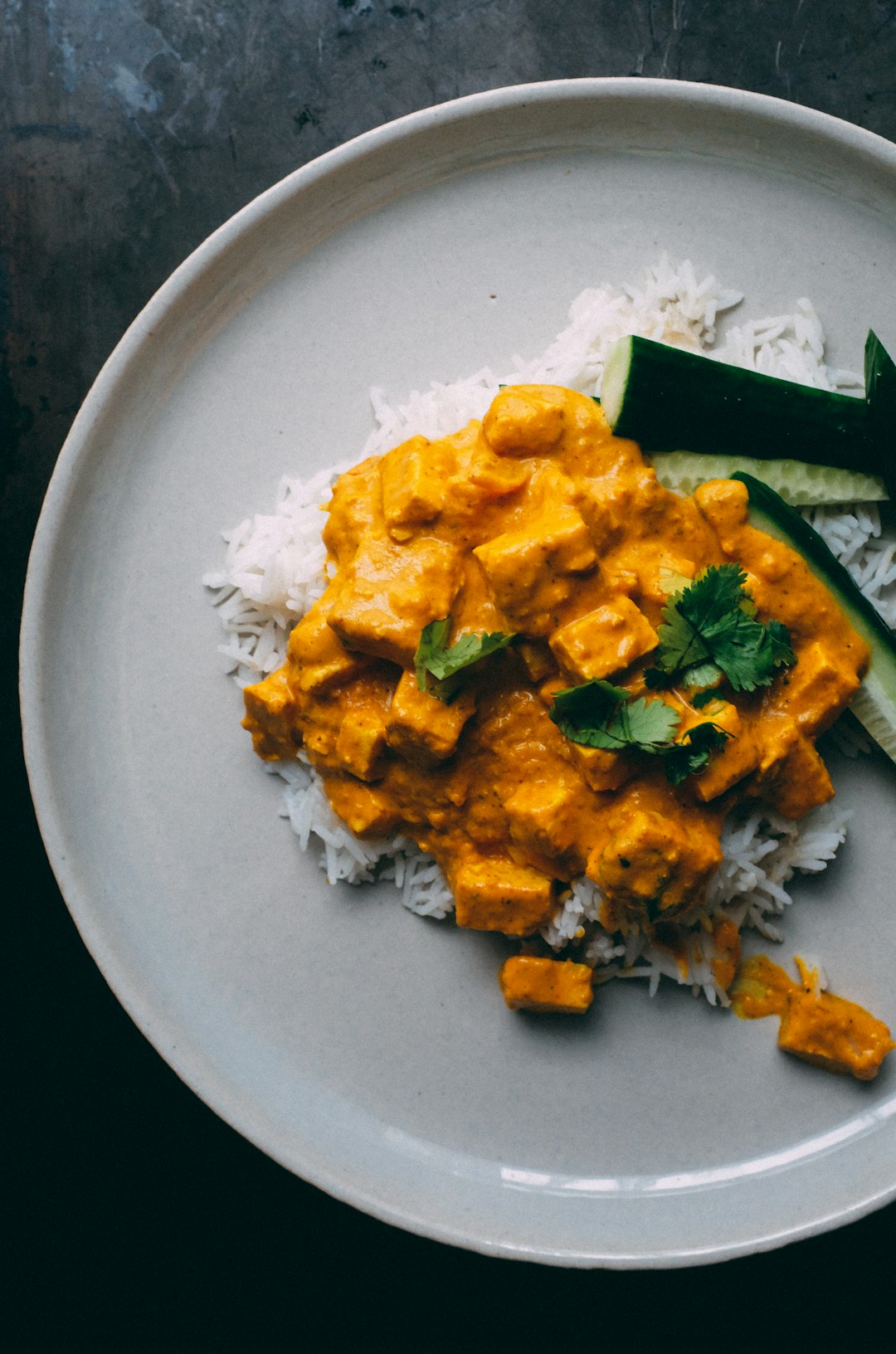Curry
Tantalise your taste buds with a savory treat that has been tantalizing palates for centuries. Curry is a flavorful and aromatic dish originating in India with its roots tracing back to the ancient spice routes. The word “curry” is derived from the Tamil word “kari” which translates to “sauce”.
Curry is an amalgamation of spices, usually including turmeric, coriander, cardamom, ginger, garlic, and chili peppers, that are simmered in a rich and creamy broth. Depending on regional preferences, the spices may be ground or left whole, or even strained out after cooking. Curry is typically served over rice, with a side of naan, a flatbread popular in Indian cuisine.
An array of enticing flavors and textures await those who partake of Curry. Its complexity lies in its robust spices, the delicate balance between sweet, savory and spicy, and the variety of dishes it can be prepared in. From mild curries featuring coconut milk to fiery curries that pack a powerful punch, Curry can be customized to suit any palate.
While Curry’s popularity as an international cuisine has grown in recent years, it is still unknown to many. It is often mischaracterized as a “one-note” dish that is too hot and spicy to enjoy – this could not be further from the truth! In fact, Curry’s flavor profile provides a mellifluous blend of flavors and aromas that is sure to please even the most discerning of foodies.
For those seeking a truly unique gastronomic experience, curry is sure to offer a delightful surprise. So why not try something new and tantalise your taste buds with a spicy, exotic culinary delight?
Curry recipes
Amazing Curry recipes sourced from the web.
The origin of Curry
The aromatic, inviting flavour of the beloved dish 'curry' has been delighting the taste buds of many people around the world for centuries. So how did this delectable dish come to be?
Believed by many to have originated in India, the concept of 'curry' is unquantifiable as it varies wildly from region to region and is often an individual’s own unique concoction. First referred to as 'kari' in ancient Sangam Tamil literature of South India, the 'kari' would appear to be the earliest form of curry.
However, its popularity in India can be traced back even further - to a time before written records were kept - thanks to archaeological findings of pottery and stone tools that indicate curry-like dishes have been prepared since prehistoric times. By examining the etymology of many South Asian languages, scholars have proposed that curry received its Sanskrit name 'kari' as early as 3,600 years ago, hinting at its antiquity.
Curry has only grown more popular, with its delicious flavour and aromas eventually making their way to Europe and the United States during the 17th century. However, in these areas, the flavours were altered to suit the palates of the locals, resulting in a quite different version than the authentic South Asian dishes.
Today, curry is one of the most popular dishes across the globe, with its uniquely succulent flavour allowing for infinite variations of recipes. This diversity has allowed for our gustatory delight to become a firm favourite amongst people from all walks of life.
So, there you have it - a brief overview of the rich history of this aromatic and flavourful dish. Whether you enjoy it mild, medium or spicy, one thing is for certain - the sweet and savoury delight that is curry will continue to excite taste buds for centuries to come!
Types of Curry
Curry is one of those classic dishes that bring people together from all around the world. It is a savory dish that has something for everyone, and it is a beloved staple of global cuisine. There are many varieties of curry to choose from, and each offers its own unique flavor and texture. Whether you prefer something mild and subtle or something more robust and spicy, there is surely a curry to tantalize your taste buds.
A classic curry dish starts with a base of onions, garlic, and spices like cardamom, coriander, cumin, and turmeric. This combination of ingredients creates an umami-rich flavor that can later be amplified with additional ingredients such as tomatoes, potatoes, bell peppers, and different types of proteins like chicken, shrimp, or beef. The spices used in a classic curry can range from mild to fiery hot, depending on the region and the cook’s preference. Once all the ingredients are cooked, the dish is typically finished with a garnish of chopped fresh cilantro and a dollop of rich cream or yogurt.
Kadhi, another type of curry, is popular in India, Bangladesh, and Pakistan. It is made from a thick, creamy mixture of chickpea flour, yogurt, vegetables, and spices. This dish is often served with rice or roti, a type of flatbread.
For those who want to warm up their dinner, Thai curries are a great choice. These curries are characterized by an intense and complex blend of flavors, thanks to ingredients like lemongrass, kaffir lime leaves, bird's eye chilies, and fragrant spices like galangal and coriander. Thai curries usually have coconut milk as the base, which adds a sweet and nutty flavor to the dish.
Japanese curry is yet another popular curry dish. It is usually made with a roux that gives the finished dish a thick, stew-like consistency. The roux is created by slow-cooking flour and butter, and then adding a combination of spices like cloves, cardamom, turmeric, and bay leaves. This type of curry is often served with Japanese staples like white rice, pickles, and hard-boiled eggs.
No matter what kind of curry you choose, you are sure to be delighted by the complexity of flavor. Every bite will be like a journey to the corners of the world, and it's one that you'll never forget. So next time you're feeling adventurous, consider making a curry dish for you and your family; it's a guaranteed success.



